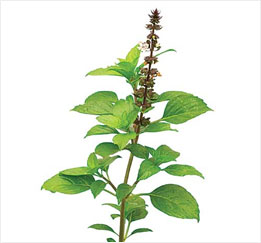8 branches of Ayurveda
8 branches of Ayurveda
The ancient Indian system of Ayurveda comprises eight specialized branches, each focusing on different aspects of health, wellness, and healing. These branches, collectively known as "Ashtanga Ayurveda," offer a comprehensive approach to holistic healthcare. Here's a brief overview of each of the eight branches:
- Kaya Chikitsa (General Medicine) :
- Bala Chikitsa : Obstetrics, Gynecology & Pediatrics
- Graha Chikitsa : Psychiatry
- Shalakya Tantra : ENT and Ophthalmology
- Shalya Tantra : Surgery
- Agada Tantra / Visha Chikitsa : Toxicology
- Jara / Rasayana Tantra : Geriatrics
- Vajikarana : Reproductive sciences
Kaya Chikitsa (General Medicine) :
Kaya Chikitsa is the branch of Ayurveda that focuses on general medicine and the treatment of various diseases and ailments. It encompasses preventive healthcare, diagnosis, and treatment of a wide range of health conditions using natural remedies, dietary modifications, lifestyle changes, and herbal formulations.
Balachikitsa (Pediatrics) :
Balachikitsa is the branch of Ayurveda dedicated to the healthcare of infants, children, and adolescents. It addresses pediatric health concerns, growth and development, nutritional needs, and the management of childhood disorders using Ayurvedic principles and treatments tailored to the needs of young patients.
Graha Chikitsa (Psychiatry) :
Graha Chikitsa, also known as Bhuta Vidya, deals with the diagnosis and treatment of mental health disorders. This branch aims to promote mental well-being by addressing psychological imbalances through various therapeutic interventions such as meditation, herbal medicines, lifestyle adjustments, and counseling.
Urdhvanga Chikitsa (Treatment of disorders of head and neck) :
Urdhvanga Chikitsa focuses on the diagnosis and management of disorders related to the head and neck region, including ENT (ear, nose, and throat) conditions, eye disorders, dental issues, and neurological ailments. It incorporates specialized Ayurvedic therapies and herbal formulations targeting these specific areas.
Shalya Tanra (Surgery) :
Shalya Tantra is the surgical branch of Ayurveda, which includes traditional surgical techniques and procedures for treating conditions such as wounds, fractures, tumors, and other surgical disorders. While modern surgical practices have evolved, Ayurvedic texts contain valuable knowledge of surgical principles and techniques.
Damstra Chikitsa (Toxicology) :
Damstra Chikitsa, also known as Agadatantra, deals with the management of toxicological conditions and poisoning. It covers the identification of toxins, their effects on the body, and the use of antidotes and detoxification methods to manage toxicity and prevent adverse health effects.
Jara Chikitsa (Geriatrics) :
Jara Chikitsa focuses on the health and well-being of the elderly population, addressing age-related issues, degenerative disorders, and promoting graceful aging. It emphasizes holistic approaches to maintain vitality, cognitive function, mobility, and overall quality of life in the elderly.
Vrisha (Aphrodisiacs) :
Vrisha, also known as Vajikarana, is the branch of Ayurveda that deals with sexual health, fertility, and reproductive medicine. It encompasses the use of herbal formulations, dietary recommendations, and lifestyle modifications to support sexual vitality, manage sexual disorders, enhance fertility, and promote reproductive health.
These eight branches collectively provide a comprehensive framework for understanding and addressing various aspects of health and wellness, while emphasizing the holistic connection between the body, mind, and spirit. Each branch of Ayurveda offers specialized knowledge and therapeutic interventions to support an individual's overall well-being across all stages of life.
Tulsi
Tulsi is one of the most revered plants in India. In Ayurveda, it is often said to be the 'elixir of life'. A sacred plant in Hinduism Tulsi means 'the incomparable one in Sanskrit'. In Ayurvedic tradition, Tulasi is used to support the normal respiratory function, promote good health and longevity. It is grown all over India, in houses, gardens and temples.

